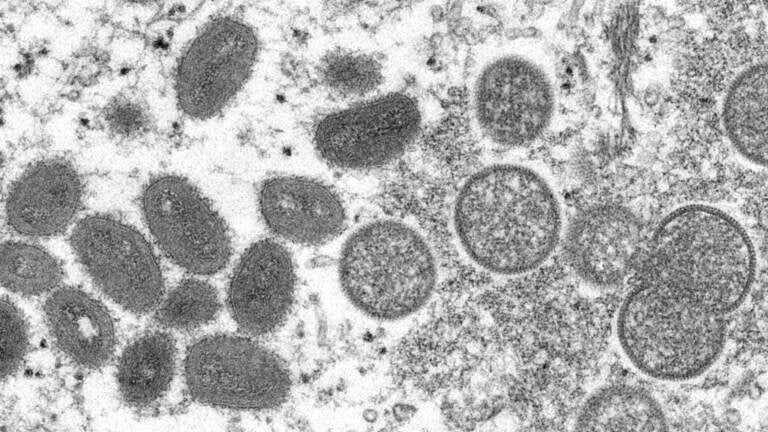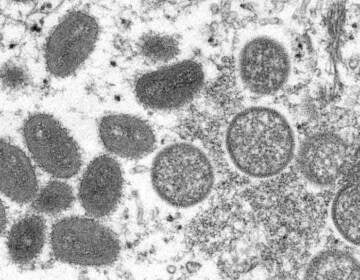Philadelphia’s suspected case of monkeypox now confirmed by the CDC, health department says
Monkeypox is spread through close, personal contact. Symptoms usually include fever, fatigue, headache, and enlarged lymph nodes.

File photo: This 2003 electron microscope image made available by the CDC shows mature, oval-shaped monkeypox virus particles, left, and spherical immature particles, right. (Cynthia S. Goldsmith, Russell Regner/CDC via AP)
This story originally appeared on 6abc
The Philadelphia Department of Public Health said Friday a suspected case of monkeypox in a city resident is now confirmed.
The probable case was first announced on Thursday afternoon, but CDC testing has since confirmed it.
The health department said the monkeypox virus has a much longer incubation period, which helps with contact tracing and containment.
“Typically, someone will develop symptoms between five and 21 days from the time that they are exposed,” said Dana Perella, Acute Communicable disease manager with the Philadelphia Health Department.
Perella said there is currently a vaccine to lessen the severity of illness and antiviral treatment for patients with monkeypox.
“I believe that residents and visitors should feel safe to do all the fun things Philadelphia has to offer, with the proper precautions,” she said.
City officials are working with the CDC to investigate how the person was exposed and if they may have exposed anyone else since they became infectious.
The current outbreak was first confirmed in a British resident on May 6. Since then, cases have been confirmed in 29 other non-endemic countries, including the United States. The CDC reports that there are 23 confirmed cases in 11 states. Worldwide, there has only been one death associated with this outbreak.
Officials strongly recommend that anyone who is experiencing symptoms of an unexplained rash on their face, palms, arms, legs, genitals, or the perianal region that may be accompanied by flu-like illness should contact their regular healthcare provider as soon as possible.
Monkeypox is spread through close, personal contact. Initial symptoms usually include fever, fatigue, headache, and enlarged lymph nodes. A rash often starts on the face and then appears on the palms, arms, legs, and other parts of the body. Some recent cases began with a rash on the genitals or perianal region only with no other initial symptoms.
Over a week or two, the rash changes from small, flat spots to tiny blisters that are similar to chicken pox, and then to larger blisters. These can take several weeks to scab over. Once the scabs fall off, the person is no longer contagious.
Monkeypox is a viral disease that is usually found in Central and West Africa. Monkeypox was first discovered in laboratory monkeys in 1958. Blood tests of animals in Africa later found evidence of Monkeypox infection in several African rodents. In 1970, Monkeypox was reported in humans for the first time.
WHYY is your source for fact-based, in-depth journalism and information. As a nonprofit organization, we rely on financial support from readers like you. Please give today.





